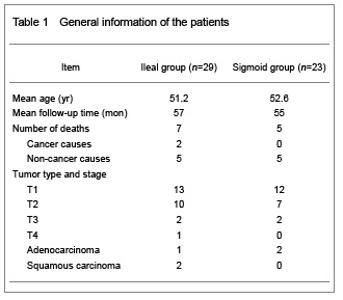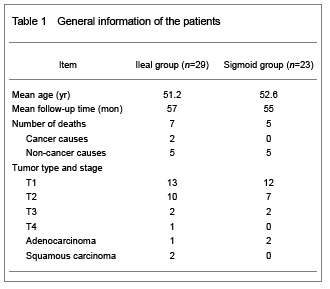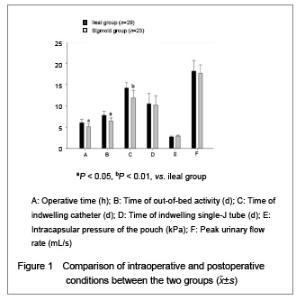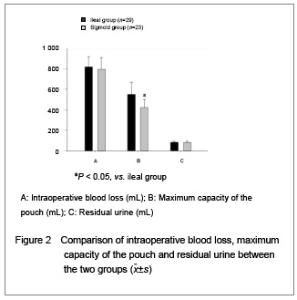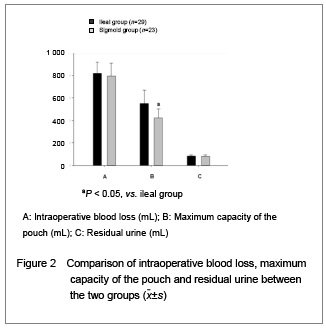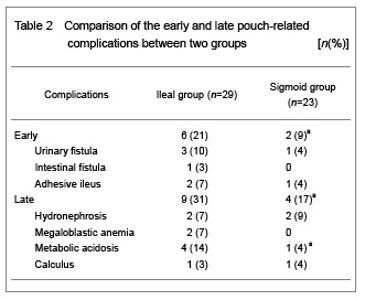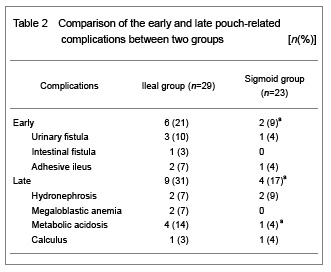| [1] Chen Z, Lu G, Li X, et al. Better compliance contributes to better nocturnal continence with orthotopic ileal neobladder than ileocolonic neobladder after radical cystectomy for bladder cancer. Urology. 2009;73(4):838-843.[2] Durak E, Hruby GW, Okhunov Z, et al. Complete ileal neobladder intracorporeal construction with standard sutured technique and novel technology. J Urol. 2010; 183(3):1227-1231.[3] Gakis G, Jentzmik F, Schrader M, et al. Benefits and risks of orthotopic neobladder reconstruction in female patients. Aktuelle Urol. 2011;42(2):109-114. [4] Kübler H, Gschwend JE. Ileal neobladder in women with bladder cancer: cancer control and functional aspects. Curr Opin Urol. 2011;21(6):478-482.[5] Large MC, Katz MH, Shikanov S, et al. Orthotopic neobladder versus Indiana pouch in women: a comparison of health related quality of life outcomes. J Urol. 2010;183: 201-206.[6] Hassan A. Editorial comment from Dr Hassan to Short ileal segment for orthotopic neobladder: a feasibility study. Int J Urol. 2010;17:774-775.[7] Mayer M, Bauer RM, Walther S, et al. tress urinary incontinence after radical cystectomy: neobladder construction and placement of the functional retrourethral sling. Urologe A. 2009;48(6):645-648.[8] Shigemura K, Yamanaka N, Imanishi O, et al. Wallace direct versus anti-reflux Le Duc ureteroileal anastomosis: comparative analysis in modified Studer orthotopic neobladder reconstruction. Int J Urol. 2012;19(1):49-53.[9] Shirakawa H, Ishida H, Hashimoto Y, et al. Continent orthotopic ileal neobladder after kidney transplantation in a patient with urothelial cell carcinoma associated with Chinese herb nephropathy. Transplant Proc. 2008;40(5): 1741-1743.[10] Wang J, Xing N, Zhang X, et al. Orthotopic ileal neobladder reconstruction in patients with recurring bladder cancer after renal transplantation--a report of two cases and a review of the literature. Clin Transplant. 2009;23(5): 700-704.[11] Airoldi A, Volpe A, Billia M, et al. Is renal living-donor transplantation indicated in adult patients with orthotopic ileal neobladder? Lessons learned from a clinical case. Eur Urol. 2010;58(5):788-791.[12] Bauer RM, Herrmann K, Karl A, et al. Real-time MRI of continent and stress incontinent male patients after orthotopic ileal neobladder. Urol Int. 2011;87(3):325-329.[13] Schettini, M. Orthotopic neo-bladder in women. Arch Ital Urol Androl. 2010;82(4):170-172. [14] Durak E, Hruby GW, Okhunov Z, et al. Complete ileal neobladder intracorporeal construction with standard sutured technique and novel technology. J Urol. 2010; 183(3): 1227-1231. [15] Nagele U, Anastasiadis AG, Stenzl A, et al. Radical cystectomy with orthotopic neobladder for invasive bladder cancer: a critical analysis of long-term oncological, functional, and quality of life results. World J Urol. in press.[16] Gakis G, Jentzmik F, Schrader M, et al. Benefits and risks of orthotopic neobladder reconstruction in female patients. Aktuelle Urol. 2011;42(2):109-114.[17] Takenaka A, Hara I, Soga H, et al. Assessment of long-term quality of life in patients with orthotopic neobladder followed for more than 5 years. Int Urol Nephrol. 2011;43(3): 749-754.[18] Stenzl A, Sherif H, Kuczyk M. Radical cystectomy with orthotopic neobladder for invasive bladder cancer: a critical analysis of long term oncological, functional and quality of life results. Int Braz J Urol. 2010;36(5):537-547.[19] Epplen R, Pfister D, Heidenreich A. Intestinal neobladder fistula after radical cystectomy and orthotopic ileal neobladder. Urologe A. 2011;50(11):1431-1434.[20] Kosevic B, Aleksic P, Milovic N, et al. Urodynamic characteristics of the modified orthotopic ileal neobladder. Vojnosanit Pregl. 2012;69(3):253-256. |
